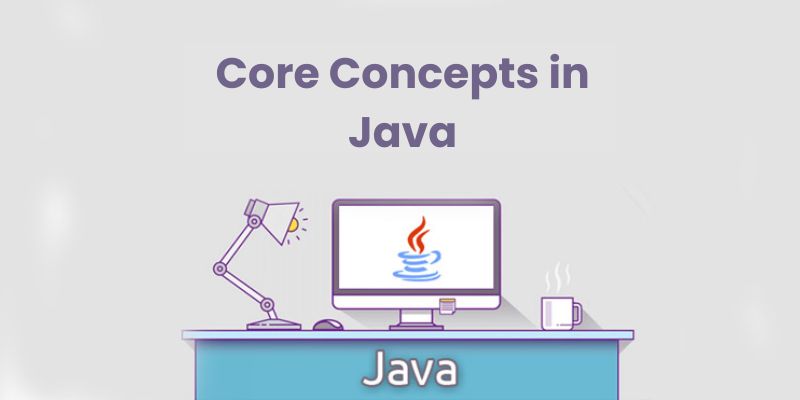
Java is one of the most popular programming languages used across the world. It is known for being simple, reliable, and platform-independent, which means that Java programs can run on different devices without changing the code. Whether you are building a mobile app, desktop software, or web application, Java offers a strong foundation. To become a skilled Java developer, it’s important to understand the core concepts that form the base of the language. A well-structured Java Course in Coimbatore can guide you through these fundamentals effectively.
Object-Oriented Programming (OOP)
Java follows the principles of object-oriented programming, which means everything in Java is treated as an object. This helps break down complex problems into smaller, manageable parts. The key features of OOP in Java include classes, objects, inheritance, polymorphism, abstraction, and encapsulation. These features make it easier to design programs, reuse code, and maintain applications over time. Java and Python handle object-oriented programming differently, which is important to understand when choosing the right language for a specific task or project.
Classes and Objects
A class in Java is like a blueprint, and an object is an actual thing created using that blueprint. Classes define what an object will contain and what it can do, while objects represent real-world things like a student, a car, or a bank account. Understanding how to create and use classes and objects is the first step to building Java applications. A practical Python Course in Coimbatore can give you hands-on experience in building and working with these core components.
Inheritance
Inheritance allows one class to take the properties and behaviors of another class. This helps reduce code repetition and makes the program easier to manage. For example, if you have a general class called “Animal” and a specific class called “Dog,” the Dog class can inherit features from the Animal class. Java uses the keyword extends to apply inheritance between classes.
Polymorphism
Polymorphism means “many forms.” It allows one action to behave differently based on the object that performs it. In Java, this is often done through method overloading and method overriding. Polymorphism makes the code more flexible and easier to scale because it supports different behaviors while using a common interface or method name.
Encapsulation
Encapsulation is the idea of wrapping the data and the code that works on the data into one unit, which is the class. It also means hiding the details of how something works from the user, showing only what is necessary. This is done by making variables private and accessing them through public methods. It improves security and helps protect the integrity of the data. These practices are emphasized in every Java Course in Madurai to help students write secure and robust code.
Abstraction
Abstraction is about showing only the important features of something while hiding the background details. For instance, when you drive a car, you use the steering wheel and pedals but don’t need to know how the engine works. In Java, abstraction is achieved using abstract classes and interfaces. It makes programs easier to understand and use.
Data Types and Variables
Java uses different types of data like numbers, characters, and true/false values. These are known as data types, and Java has two main kinds: primitive and non-primitive. Primitive types include int, float, boolean, and char. Non-primitive types include strings, arrays, and classes. Variables are used to store data in a Java program and must be declared with a data type before they are used.
Control Statements
Control statements in Java allow the flow of the program to change based on certain conditions. Common control statements include if, else, switch, for, while, and do-while. These help in making decisions, repeating actions, and managing how the program behaves under different circumstances. A Python Course in Madurai will train you to use these control structures efficiently to create dynamic and responsive applications.
Arrays and Strings
Arrays are used to store multiple values of the same type in a single container. They are useful when you need to work with a group of data items, such as scores or names. Strings are used to handle text and are one of the most commonly used data types in Java. Java provides many built-in functions to work with strings, making it easy to manipulate text.
Exception Handling
Sometimes, things go wrong while a program is running, such as trying to divide by zero or accessing something that doesn’t exist. Java handles such situations using exception handling, which prevents the program from crashing. It uses keywords like try, catch, and finally to manage errors smoothly and provide a better experience to the user. A Java Course in Pondicherry will help you master exception handling to build stable and reliable applications.
Java Virtual Machine (JVM)
Java is known for its “write once, run anywhere” ability, and this is made possible by the Java Virtual Machine (JVM). When you write Java code, it is first converted into bytecode, which the JVM then executes. The JVM acts as a middle layer that allows Java programs to run on different operating systems without changing the code.
Learning Java becomes much easier once you understand its core concepts. Each part-from object-oriented programming and classes to exception handling and the Java Virtual Machine-plays a role in building strong, efficient programs. These concepts are the building blocks that every Java programmer needs to know to create applications that are easy to use, maintain, and improve. With regular practice and a clear understanding of these fundamentals through a Java Training in Tirupur, anyone can start building real-world applications using Java.
Also Check: